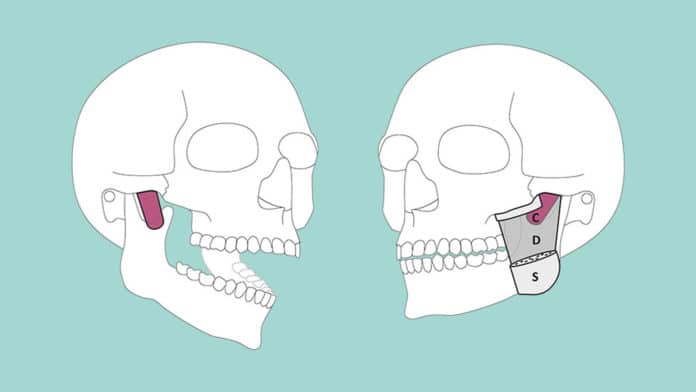The masseter muscle is the most prominent of the jaw muscles. Its principal function is to elevate the mandible against the maxilla and exert masticatory force.
The muscle is bilayered, consisting of a superficial and a deep part. However, a few historical texts mention the possible existence of a third layer. But, they are highly inconsistent as to its position.
In a new study, scientists at the University of Basel have discovered a previously overlooked section of our jaw muscles. They found a new muscle layer on the jaw, describing it as an additional third, even deeper layer.
This layer is dubbed the name Musculus masseter pars coronidea – in other words, the coronoid section of the masseter. They found that this layer is attached to the lower jaw’s muscular (or “coronoid”) process.
For this study, scientists performed a detailed examination of formalin-fixed jaw musculature. They used computer tomographic scans and the analysis of stained tissue sections from deceased individuals. Additional MRI data from a living person was also used.
Dr. Szilvia Mezey from the Department of Biomedicine at the University of Basel said, “This deep section of the masseter muscle is distinguishable from the two other layers in terms of its course and function. The arrangement of the muscle fibers suggests that this layer is involved in the stabilization of the lower jaw. It also appears to be the only part of the masseter that can pull the lower jaw backward – that is, toward the ear.”
Professor Jens Christoph Türp from the University Center for Dental Medicine Basel (UZB) said, “Given several contradictory descriptions, we wanted to examine the structure of the masseter muscle again comprehensively. Although it’s generally assumed that anatomical research in the last 100 years has left no stone unturned, our finding is a bit like zoologists discovering a new species of vertebrate.”
Journal Reference:
- Szilvia Mezey, Magdalena Müller-Gerbl, et al. The human masseter muscle revisited: the first description of its coronoid part. Annals of Anatomy (2021), DOI: 10.1016/j.aanat.2021.151879
